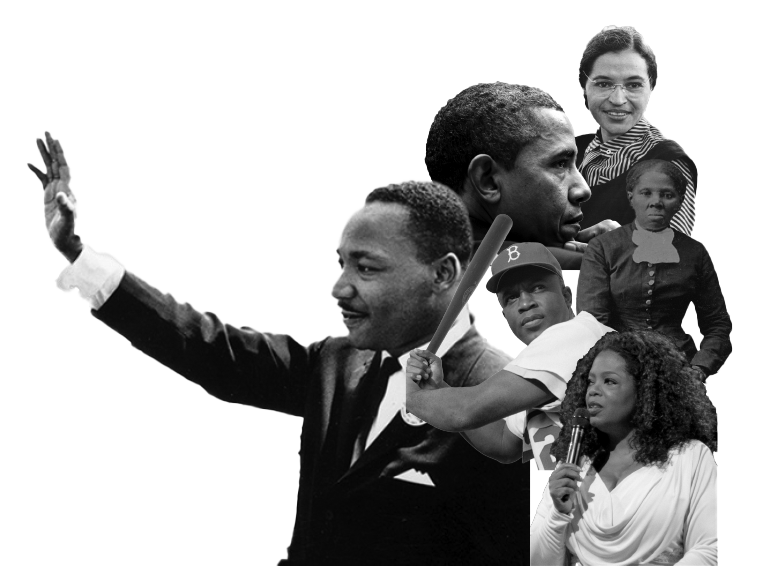Microaggression
Everyday verbal and nonverbal slights or insults communicate hostile, derogatory or negative attitudes toward marginalized groups whether intentional or unintentional.
“I’m not a racist. I have several Black friends.”
States across the country are trying to ban books about race. Proposed bills target Black authors such as Toni Morrison, most notably known for “Beloved,” and Nikole Hannah-Jones, developer of The New York Times “The 1619 Project.”
Bans aren’t just going after books that talk about racism but also books that express the Black experience.
“Banning access to information doesn’t work because people, especially young people, will always find a way around it and if you have the entire internet at your disposal, what good is banning a book in a class?” AP U.S. History (APUSH) teacher Ms. Aditi Doshi said. “I think it’s really important to frame texts that can be problematic with their use of language or their reference to material that could be disturbing or traumatic to some students. if we frame those texts appropriately, they allow us to place ourselves inside the minds and inside the shoes of people who lived in this era that we don’t have a reference point for.”
Black history is often taught in condensed form, being just a chapter in a U.S. history book and almost always only about slavery. Nothing more is required by the curriculum.
“Reconstruction is actually a standard that California has to teach, which, yeah, that’s great, but the textbook has one paragraph on it when it might actually need a whole chapter,” U.S. history teacher Mr. Robert Docter said. “That’s what’s frustrating because an accurate look at U.S. history is Black History. It’s not a category in itself; it should be interwoven throughout the entire history of the country, rather than being a unit, and you get a test on it, and then it’s done.”
Ms. Doshi also believes that Black history shouldn’t be taught as just one unit.
“As a teacher and a student of American history, Black history and American history are one in the same,” Ms. Doshi said. “They are synonymous you cannot understand narrative or themes or connections throughout American history without understanding Black history.”
She thinks teaching anything less is a silencing of Black voices.
“If you’re truly trying to understand American history accurately, black history has to be incorporated every step of the way, in every historical era, in every time period in every major theme, and this is not just limited to the topics that we traditionally associate with like history, like for example, slavery or the civil rights movement,” she said. “We have to understand that African Americans have been president America since the country’s founding since the first slave ships landed in 1619, and if we remove both people’s voices and their stories from the curriculum, that means that we are erasing them from a history that they were actually part of.”
Black students are tired of only being taught about the pain and suffering of Black people.
“A lot of people when they talk about black history, it’s just Black struggle.There’s more to Black people than us struggling,” Samara Augustine said. “Everyone was raving about ‘The Hate U Give’ and yes that’s a great book, great movie but why is it all just struggle? It’s all movies show, it’s all the media shows.”
“I’ve only ever seen one movie come even a little bit close to actually talking about black successes in a black struggle and that movie was ‘Hidden Figures,’” Djaeda Hall said. And even in that movie, the woman was still struggling, not only because she was a woman, but also because she was Black.”
And even when teaching about Black struggle, the lessons often fail to capture just how bad it was.
“In school, they would just say they made them pick cotton but I learned on TikTok that white owners also used to eat slaves and do other cruel stuff to them,” Brianna Fenders said. “We never learn about these things in school. They just say, oh it’s bad and move on.”
Students want to learn more about Black empowerment and current issues, not just slavery.
“I have one teacher who teaches us about current popular Black figures and also the Black LGBT community and he teaches it in an empowering way,” Devin Brown said. “He’s the only teacher that I’ve really seen do that. I think that should be part of the curriculum, and we should learn from what he’s doing. The curriculum should require teaching more Black figures, historical and present, rather than just being optional.”
Ms. Doshi believes teachers are responsible for making up for the content the curriculum lacks.
“I’d say that that’s a constant struggle probably for most AP history teachers, but especially for APUSH where the curriculum is so wide and there is so much to cover. The College Board framework is actually quite frustrating because it de-emphasizes aspects of Black history that I think personally deserved more importance and more time and that in an honors US history class we would absolutely delve into more detail,” Ms. Doshi said. “ So I think as a teacher, you have to realize that the APUSH framework is inherently limited, that it does not encompass all of the people or themes that make up like history, and that if you’re going to teach American history, it’s your responsibility as a teacher to acquire that knowledge on your own and then bring it into the classroom.”
In the early 1900s, African American leaders such as Ida B. Wells, Booker T. Washington, and W. E. B. Du Bois began the Black Freedom movement which was the beginning of the long Civil Rights movement.
The College Board framework only has a brief reference to the framework without any mentions of the figures involved in it. If students are to learn about these individuals from their textbooks, it is typically a short-paragraph description of each.
“My teacher hasn’t gone over anything related to Black History Month and February is almost done,” Nathan Harkless said. “It’s not just the curriculum to blame.”
“Some teachers treat Black history as something they just have to teach because it’s part of the curriculum and they want to get it out of the way and skim through it,” Brown said.
“Some teachers would just go into a topic relevant to Black history they thought was important then decide that’s all you need,” Mohanna Finnikin said. “But there’s way more than just that one topic we’re talking about.”
Mr. Docter tries to find a balance between meeting the standards while also teaching history he deems valuable by providing a diverse amount.
“My job is to teach those standards by the state of California, that’s what I’m hired to do. What’s great about teaching history is you can bring in a lot of topics that still fit those standards,” he said. “I’m able to fit in a lot of things that I personally find interesting and important, that also fit those standards.”
Teaching or learning Black history doesn’t have to be comfortable.
“The more we try to sugarcoat things, the less that’s getting done, because we can try to explain it in the simplest of terms, but that will never get the point across,” Augustine said. “We got to make them uncomfortable. There’s no other way to get the point across because we’ve been sugarcoating all of our struggles, all of our history and where are we right now? We’ve barely made progress.”
“A little discomfort is nothing like what we go through on a daily basis. When I walk out of the house I think that if I get angry or if I make a mistake or if I get pulled over, I could die,” Elom Attipoe said. “So some discomfort for non-black people to learn about our history and I don’t have to worry about dying every day, it’s a trade-off I’m willing to make.”
Mr. Docter agrees that his lessons should challenge his students’ ways of thinking and get them out of their comfort zone.
“Learning anything is a sense of discomfort. Learning is when you’re experiencing something that is different than what you’ve been introduced to,” Mr. Docter said. “That would include Black history too, but learning, in general, should do that. We need to be mindful of our students’ experiences and backgrounds and what they’ve gone through. I have a tremendous amount of privilege as a white male, so even using my voice I have to be mindful of that. There are topics in American history that may be uncomfortable at times, but it’s about how you present it.”
California has made a move toward improving the curriculum to include more thorough and empowering Black history by being the first state to require students to complete an ethnic studies course to graduate high school. While African American history isn’t the only course to choose from, it’s an option students have when trying to learn more than the history taught in regular history classes.



